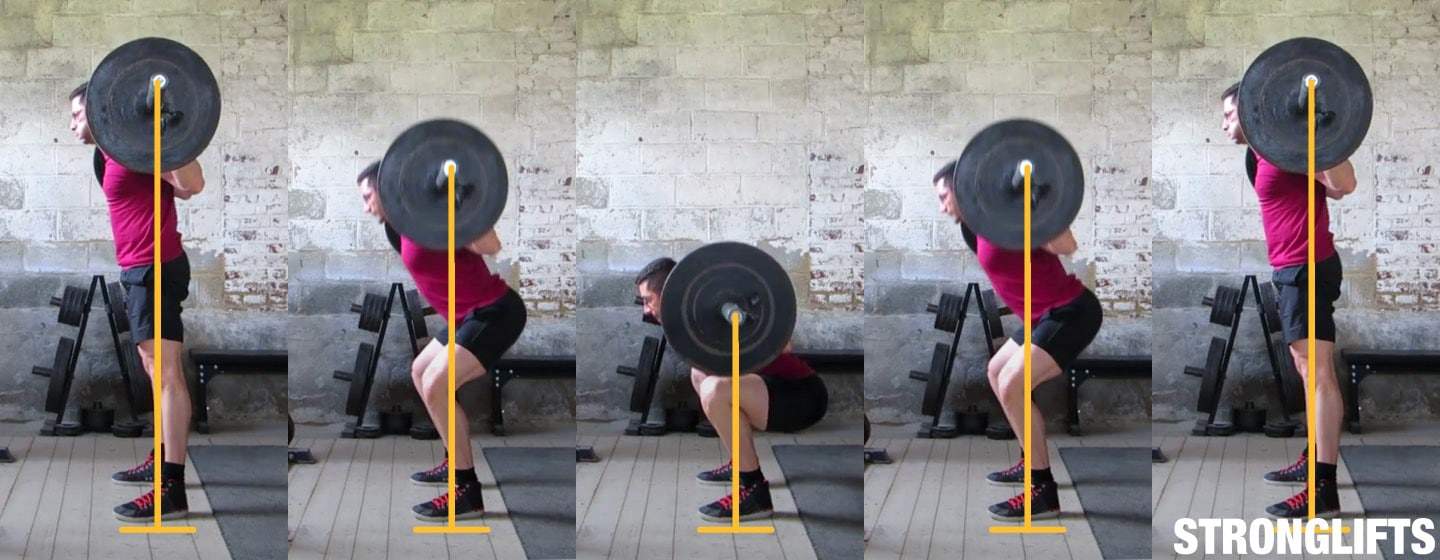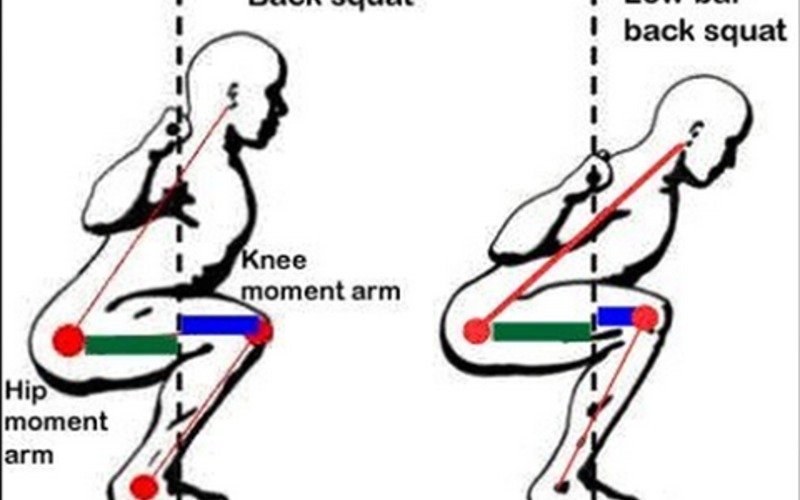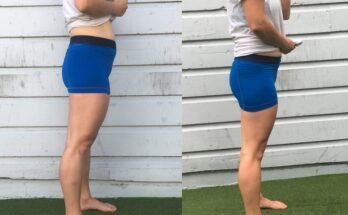Low bar squats position the barbell lower on the trapezius, targeting posterior chain muscles. High bar squats hold the bar higher, emphasizing the quads and upright posture.
Exploring the differences between low bar and high bar squats is essential for athletes and fitness enthusiasts aiming to optimize their strength training. The low bar squat typically allows for lifting heavier weights as it engages the posterior chain muscles such as the glutes, hamstrings, and back more effectively.
On the other hand, the high bar squat demands a more vertical torso and greater knee flexion, which places more emphasis on the quadriceps and requires good ankle and hip flexibility. Both variations play a significant role in improving lower body strength, but your choice may depend on your training goals, body mechanics, and overall mobility. Understanding these squat styles will help you tailor your workout for desired muscle development and performance enhancement.

Credit: www.youtube.com
Anatomy Of Squat Variants
The squat is a powerful exercise. It shapes the body and boosts strength. Squats come in two main types—low bar and high bar. Each type works different muscles. Understanding these can help choose the right squat for fitness goals.
Muscle Engagement in Low Bar SquatsMuscle Engagement In Low Bar Squats
The low bar squat targets the posterior chain muscles. This squat style places the bar lower on the back. It creates a slight forward lean. This position engages specific muscles more.
- Gluteus maximus: For hip extension.
- Hamstrings: To help the glutes.
- Adductors: Works as stabilizers.
- Erector spinae: Keeps the spine straight.
Low bar squats allow for more weight. They are great for power and strength building.
Muscle Engagement in High Bar SquatsMuscle Engagement In High Bar Squats
A high bar squat focuses on the quads and core. The bar sits on the traps in this squat. It allows for a more upright posture. This engages muscles differently than the low bar squat.
- Quadriceps: Main muscle worked.
- Core muscles: For balance and posture.
- Gluteal muscles: Less than low bar but still significant.
This squat is good for those who do Olympic lifts. It aids in developing leg strength and size.
Biomechanical Differences
Exploring squatting techniques uncovers key biomechanical variations. Diving into the sculpted motions of the low bar and high bar squats unveils unique demands on the body, influencing everything from muscle activation to the alignment of the spine. Let’s break down these differences.
Bar Placement And Posture
The bar’s position transforms the squat. With the high bar squat, the barbell sits atop the traps, creating an upright stance.
Conversely, the low bar squat positions the barbell further down, on the rear deltoids, promoting a forward lean in the torso.
- High Bar: Upright posture, bar over traps
- Low Bar: Forward lean, bar on deltoids
Joint Angles And Leverage
Different joint angles influence the mechanics of each squat variation. In the high bar squat, knees track more forward, placing greater stress on the quads. The low bar squat engages the hips and glutes more due to the increased hinge at the waist.
| Movement | High Bar Squat | Low Bar Squat |
|---|---|---|
| Knee Angle | Acute | Obtuse |
| Hip Angle | Less acute | More acute |
| Muscle Focus | Quads | Hips & Glutes |
These details help lifters tailor their training to target specific muscle groups, optimize performance, and prevent injury.
Performance Considerations
When deciding between low bar and high bar squats, one key factor to consider is performance. Each style impacts your body differently. Therefore, it’s crucial to align your squat technique with your fitness goals. Whether you aim to build raw strength or enhance overall mobility, understanding these variations will elevate your training regimen.
Strength Training Goals
Selecting the appropriate squat style can make a significant difference in your strength development. Low bar squats shift the center of gravity backward. This allows you to engage more of the posterior chain muscles, like the glutes and hamstrings, leading to potentially greater force production and heavier lifts. Conversely, high bar squats target the quadriceps more intensely, promoting balanced leg strength and power beneficial for athletic performance.
| Low Bar Squats | High Bar Squats |
|---|---|
| Emphasis on glutes and hamstrings | Emphasis on quadriceps |
| Allows for heavier weight | Improves athletic activities |
Mobility And Flexibility Requirements
Success in either squat technique comes down to your body’s mobility. High bar squats require more ankle and wrist flexibility since the bar sits atop the shoulders and demands a more upright posture. Low bar squats, with the bar positioned lower on the back, require less ankle mobility but greater shoulder and hip flexibility. To determine your best fit, assess your mobility and work on any limitations.
- Low bar squats may be better if shoulder flexibility is high.
- High bar squats can be more fitting for those with greater ankle mobility.
Injury Risks And Prevention
Squats are essential in strength training. But, not all squats are the same. The low bar squat and high bar squat differ. Each has unique injury risks. Understanding these can prevent harm. Let’s look at how to stay safe while getting stronger.
Common Low Bar Squat Injuries
The low bar squat often focuses on the posterior chain. This squat could stress the lower back more. See below for injuries and prevention tips.
- Lower back pain: Keep a neutral spine.
- Wrist strain: Ensure a proper grip.
- Elbow issues: Don’t let your elbows flare out. Keep them under the bar.
- Shoulder pain: Warm up your shoulders well.
Common High Bar Squat Injuries
High bar squats target the quads more. This can result in different injuries. Look below for the common ones.
| Injury | Prevention Tips |
|---|---|
| Knee pain | Keep knees in line with toes. Don’t let them cave in. |
| Quad strain | Develop flexibility. Stretch your quads. |
| Ankle discomfort | Use lifting shoes. They help with ankle mobility. |
For both squats, balance is key. Make sure to engage your core. This can help with stability. Also, never skip a proper warm-up. It preps your muscles for action.
Choosing The Right Squat For You
Low bar and high bar squats are popular exercises for strengthening the lower body. Each squat style offers unique benefits. The correct choice depends on your personal goals, body type, and lifting preferences. In this section, we’ll guide you through the key considerations to help you select the squat that maximizes your training results.
Assessing Your Body Type And Lifting Style
Identifying which squat aligns with your physique and lifting approach is vital. Here’s how:
- Low bar squats require shoulder mobility for bar placement.
- High bar squats are often better for those with stronger quads and upright postures.
- Consider your hip structure; some are naturally better suited for one squat style over the other.
- Assess your flexibility—it can determine your comfort and performance in each squat.
Practicing both techniques to see which feels more natural is smart. Listen to your body’s feedback.
Integrating Squats Into Your Workout Routine
To smoothly incorporate squats into your routine, follow these steps:
- Start with light weights to master the form.
- Gradually increase the weight as your technique improves.
- Alternate between low and high bar to work different muscle groups.
- Keep track of your progress and adjust your training accordingly.
Remember to allow for adequate rest between squat sessions. Your muscles need time to recover.

Credit: stronglifts.com

Credit: www.youtube.com
Frequently Asked Questions On Low Bar Vs High Bar Squats
What Distinguishes Low Bar From High Bar Squats?
Low bar squats position the barbell lower on the upper back, just above the rear deltoids, necessitating a forward torso lean. High bar squats sit the bar on the traps, allowing for a more upright posture. This affects muscle emphasis and joint loads.
Are High Bar Squats Better For Building Quads?
High bar squats target the quadriceps more due to the upright torso position, emphasizing knee extension. They are excellent for building quad strength and size, making them a favored choice for bodybuilders and Olympic weightlifters.
Can Low Bar Squats Improve Deadlift Performance?
Low bar squats can enhance deadlift performance by strengthening the posterior chain, including the glutes, hamstrings, and lower back. This squat variation mimics the hip hinge movement, beneficial for a strong deadlift.
How Does Squat Bar Placement Affect Mobility?
High bar squats demand greater ankle and thoracic spine mobility due to the upright posture. Low bar squats require less ankle mobility but more shoulder and hip flexibility to maintain the correct bar position and a balanced squat.
Conclusion
Deciding between low bar and high bar squats ultimately hinges on your goals and biomechanics. Whether you aim for strength, muscle growth, or athletic performance, choose the squat variation that aligns with your objectives. Remember, form and safety are paramount.
Explore both, and optimize your workout for personal gains.

